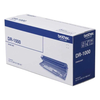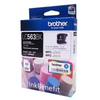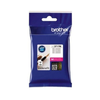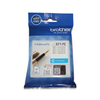Motion graphic design is a dynamic and creative field within graphic design that involves the use of visual elements, animation, and motion to convey information, tell stories, or enhance the visual appeal of various media. It combines graphic design principles with animation techniques to create engaging and compelling visual experiences in motion.
Key aspects of motion graphic design include:
-
Animation: Motion graphics utilize animation techniques to bring static graphics to life. This involves the use of movement, transitions, and effects to convey a message or enhance visual storytelling. Animations can range from simple transitions to complex, character-driven narratives.
-
Visual Elements: Motion graphic designers incorporate graphic design elements such as typography, illustrations, icons, and images into animated sequences. These elements are carefully crafted to maintain a cohesive visual style and effectively convey the intended message.
-
Timing and Pacing: Successful motion graphic design pays careful attention to timing and pacing. The duration of animations, the speed of transitions, and the rhythm of movement contribute to the overall impact and effectiveness of the visual storytelling.
-
Audio Integration: Sound and music play a crucial role in motion graphics. Designers often integrate audio elements to enhance the emotional impact of the visuals, creating a more immersive and memorable experience.
-
Storytelling: Motion graphics are frequently used to tell stories or explain complex concepts in a visually engaging way. Whether it's a product demo, educational content, or marketing material, motion graphic design enhances the narrative through dynamic visuals and movement.
-
User Interface (UI) Animation: Motion graphic design is applied in user interface design to create smooth and intuitive transitions between different states, enhancing the user experience in digital interfaces and applications.
-
Branding and Identity: Motion graphics are used to reinforce and extend a brand's visual identity. Animated logos, brand elements, and consistent motion design contribute to a unified and dynamic brand presence across various media.
-
3D Animation: In addition to 2D animations, motion graphic design may involve 3D animation techniques to add depth and realism to visual elements. This is particularly common in industries such as film, gaming, and advertising.
-
Expressive and Artistic Styles: Motion graphic design allows for a wide range of creative expression. Designers can explore various styles, from clean and minimalist animations to bold and vibrant visual spectacles, depending on the project's goals and audience.
-
Cross-Media Applications: Motion graphics find applications across various media, including television, film, web content, social media, presentations, and advertising. The versatility of motion graphic design makes it a valuable tool in communicating messages across different platforms.
Motion graphic designers often use software such as Adobe After Effects, Cinema 4D, and other animation tools to create visually stunning and dynamic content. The field continues to evolve with advancements in technology, providing new possibilities for creative expression and communication through motion.
 Brother DR-1000 Original Drum Unit, BlackQAR 140.00
Brother DR-1000 Original Drum Unit, BlackQAR 140.00 Brother LC563BK Black Ink CartridgeQAR 48.00
Brother LC563BK Black Ink CartridgeQAR 48.00 Brother LC3717M Magenta Ink CartridgeQAR 48.00
Brother LC3717M Magenta Ink CartridgeQAR 48.00 Brother LC3717C Cyan Ink CartridgeQAR 48.00
Brother LC3717C Cyan Ink CartridgeQAR 48.00 Brother LC3717BK Black Ink CartridgeQAR 55.00
Brother LC3717BK Black Ink CartridgeQAR 55.00






